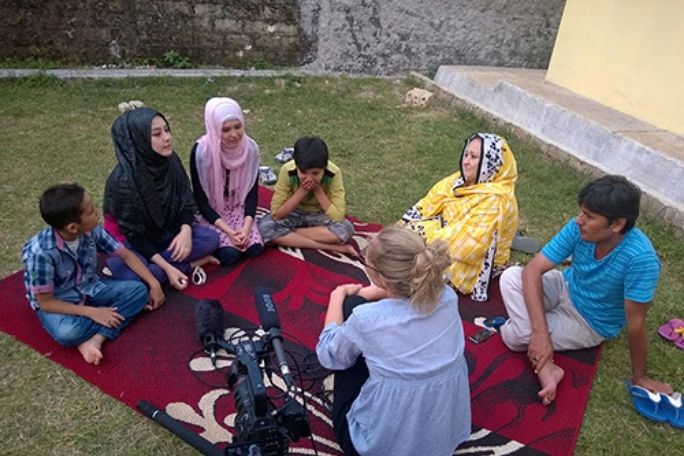Lesson summary
Students are introduced to the concept of hope and how it can emerge from the stories of people chasing asylum. They will read informative texts about the first ever Refugee Olympic Team and build their individual and collective understanding by considering stories that inspire and create a sense of hope. Using a selection of thinking, planning and writing tools, students will create a biographical text in which they use language to capture emotions, empathy and communicate experiences that inspire hope.
Learning intentions:
Students will...
- understand how stories of overcoming adversity in refugees’ journeys can send a powerful message of hope to other people seeking asylum.
- understand how biographical texts can be used to communicate individual stories and inspire hope.
- make language choices that communicate their understanding of individual stories and a sense of hope that can inspire audiences.
Lesson guides and printables
Curriculum links
Select your curriculum from the options below.
Lesson details
Curriculum mapping
Australian curriculum content descriptions:
Year 10 English:
- Identify and explore the purposes and effects of different text structures and language features of spoken texts, and use this knowledge to create purposeful texts that inform, persuade and engage (ACELY1750)
- Create sustained texts, including texts that combine specific digital or media content, for imaginative, informative, or persuasive purposes that reflect upon challenging and complex issues (ACELY1756)
- Create literary texts with a sustained ‘voice’, selecting and adapting appropriate text structures, literary devices, language, auditory and visual structures and features for a specific purpose and intended audience (ACELT1815)
Syllabus outcomes: EN5-1A, EN5-3B.
General Capabilities: Literacy, Personal and Social Capability, Ethical Understanding, Intercultural Understanding.
Cross-curriculum priority:
Relevant parts of Year 10 English achievement standards: Students evaluate how text structures can be used in innovative ways by different authors. They explain how the choice of language features, images and vocabulary contributes to the development of individual style, and create a wide range of texts to articulate complex ideas.
Unit of work: Stories of Chasing Asylum – access the unit overview here.
Time required: 120 minutes.
Level of teacher scaffolding: High – facilitate class discussion and assess student work.
Resources required
- Student Worksheet – one copy per student OR computers/tablets to access the online worksheet
- Device capable of audio/visual presentation to present a website to the class, and enough devices for students to use individually or in groups of 2-3
- Internet access
- Article – Olympic Refugee Team overcomes hardship to make Games debut (optional – one per student)
- Biographical Writing Factsheet (one per student – printed or accessed online)
- Triple Venn Diagram
Skills
This lesson is designed to build students’ competencies in the following skills:
- Empathy
- Communication
- Creativity
- Critical thinking
- Ethical understanding
- Cultural understanding
- Global citizenship
- Digital literacy
- Social skills
Additional info
Chasing Asylum exposes the real impact of Australia’s offshore detention policies through the personal accounts of people seeking asylum and whistleblowers who tried to work within the system. To watch the documentary, stream it on Kanopy and Clickview or purchase the DVD at the ATOM Education Shop.


Welcome back!
Don't have an account yet?
Log in with:
Create your free Cool.org account.
Many of our resources are free, with an option to upgrade to Cool+ for premium content.
Already have an account?
Sign up with:
By signing up you accept Cool.org's Terms and Conditions(Opens in new tab) and Privacy Policy(Opens in new tab).